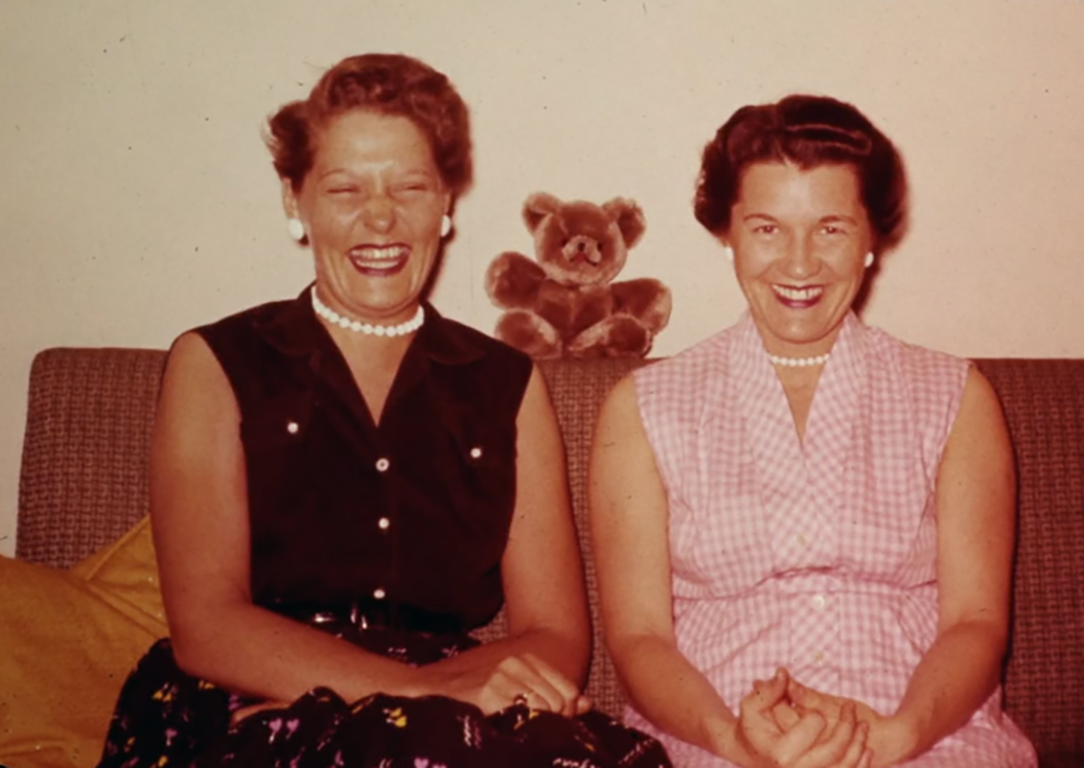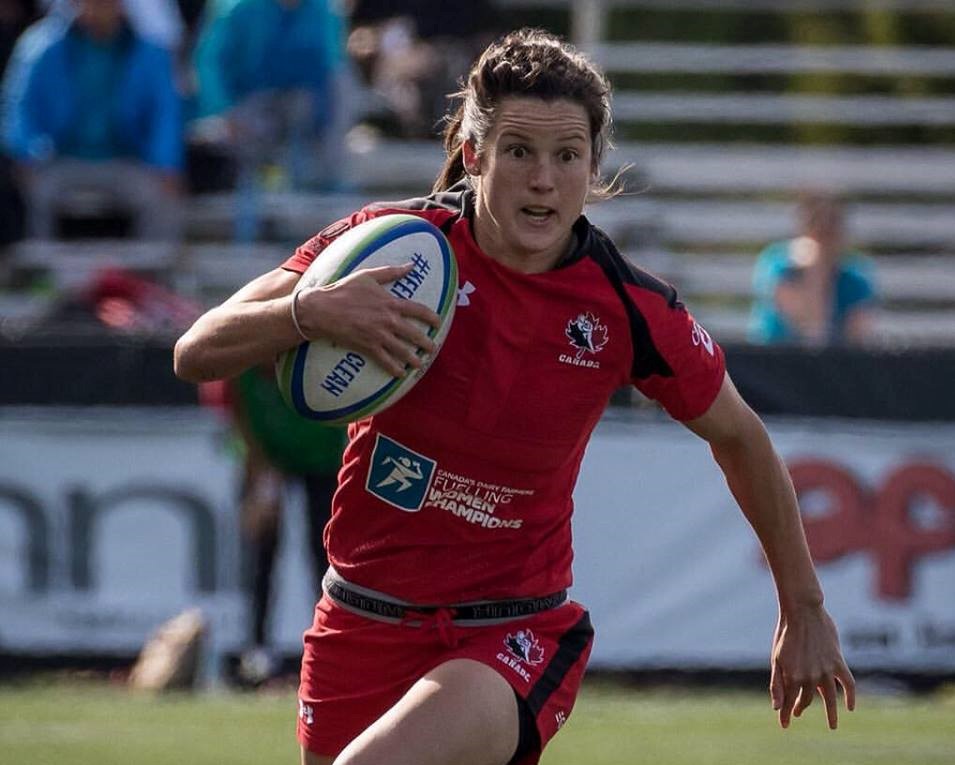[Editor’s note: At least 182 out LGBTQ2S+ athletes competed at the Tokyo Olympics, three times the number at the previous games in Rio and greater than all who have participated in previous summer and winter Olympics combined, according to Outsports. UBC sociologist Becki Ross traces ways in which sport has served as refuge and enforced closet for queer women.]
As a white queer athlete, sports enthusiast and sociologist, I have forever searched for stories about queer women who earned their livelihood playing sports.
Stories shared in Lois Browne’s non-fiction book The Girls of Summer and the 1992 Hollywood film it inspired, A League of Their Own, make scant mention of lesbian ballplayers.
There are some tales of brave souls who scaled cis-sexist and heteronormative barriers to come out in sporting worlds: Billie Jean King, Martina Navratilova and Amélie Mauresmo in tennis; Patty Sheehan, Rosie Jones and Alena Sharp in golf; Sheryl Swoopes, Sue Bird and Brittney Griner in basketball; and Abby Wambach, Erin McLeod and Megan Rapinoe in soccer. Some of these women, like Swoopes and Griner, also dealt with racist barriers.
So, when Netflix released the documentary A Secret Love last year, I was thrilled that some of the little-known history of gay women and sports was revealed. The film is a poignant portrait of a 71-year lesbian relationship between Terry Donahue, an infielder-turned-catcher with the Peoria Redwings of the AAGPBL, and her lover, Pat Henschel.
Terry and Pat were two courageous women from the Canadian Prairies who fell in love and stayed together in Chicago, after Terry’s last season of pro-baseball. The film also opens up conversations about long-hidden histories of queer women, sport and pernicious legacies of racism.
Terry started playing for the Redwings in Peoria, Illinois, in 1946. During her off-season in 1947, Terry met Pat in a small town in Saskatchewan when the two were teammates on the Wildcats, a women’s ice hockey team in the Western Canada Girls Hockey League.
Chris Bolan, Terry’s great-nephew, started filming Terry and Pat when they were in their mid-80s and only recently “out” to family members. Using interviews, photographs, baseball cards, home movies, poetry and letters, Bolan captures the women’s shared passion for athletic pursuits, their enduring relationship and their marriage in 2015, a few years prior to Terry’s death at 93.
A history of multiple exclusions
The decades immediately after the Second World War in the United States and Canada were fraught with homophobic violence, including state-led purges of queer people from the military and public service. Medical experts pathologized homosexuals as “sexually maladjusted.” Mass-marketed lesbian-themed pulp novels told titillating tales of gay women’s torment and heartbreak.
Targeted for being “deviants,” “sinners” and “national security risks” in the 1940s and 1950s, some lesbians found solace, belonging and lifelong love through involvement in sports.
At the same time, sporting access for gay women was structured by racism, class hierarchies and homophobia. Terry Donahue’s professional league banned African American women. Also, baseball had a role in consolidating settler colonialism and Indigenous displacement across the U.S. and Canada.
White racial identities, middle-class comfort, financial investments and calculated secrecy protected Terry and Pat. After Terry’s retirement from the AAGPBL, she and Pat worked at an interior design firm and lived in Chicago’s predominantly white urban and suburban districts. Neither Terry nor Pat was roughed up, extorted or arrested during police raids on working-class gay and lesbian bars or drag balls in downtown Chicago’s “black pansy” scene. Terry and Pat said they never frequented “those places.”
Meanwhile, residents of the predominantly African American district of Bronzeville on Chicago’s South Side, including working-class and poor queers of colour, routinely endured anti-Black brutality, over-policing, housing insecurity and precarious employment.
Feminine beauty ideals and ticket sales
In the 1940s, the age-old negative stereotype that competitive sport manufactures “dykes” out of girls and women must have made things difficult.
White female professional baseball players like Terry Donahue of the Redwings and members of the rival Rockford Peaches, Racine Belles and Rapid City Chicks were subjected to mandatory beauty and charm school lessons designed to ratchet up their cis feminine allure and to demasculinize their physical appearance. I marvelled at a photograph of Terry and Pat in uber-feminine couture at a time when gender-transgressive butch lesbians were the most visible beacons of post-war lesbian life.

Along with evening curfews and “no dating” policies, the league’s brass sought to reassure male spectators that white female players were, or appeared to be, heterosexually available — and thus worth watching.
Even in 2021, many LGBTQ+ and Two Spirit elite athletes stay hidden for fear of violence, on top of fearing the loss of fans, product endorsements and salaries.
A decade ago, U.S. Supreme Court Judge Elena Kagan was rumoured to be a lesbian after a photo surfaced of her playing softball in the 1990s in Chicago. The vigorous disavowal of Kagan’s queerness is a reminder of the lesbian stigma used to police women and hinder their athletic endeavours.
Besides professional baseball, community-based softball leagues have nourished lesbian subcultures in the west for decades. Softball leagues like the Haveners in Toronto’s Ladies Softball League (1960s) and Big Apple Softball in New York (1977-present) have been oases for queer members in search of camaraderie and romance.
While these sporting spaces have not been inclusive and transformative for all queer, trans and non-binary folks, they have long symbolized the promise of precious refuge for participants.
Terry and Pat hid their lesbian selves for more than half a century because they felt they had to and because they could. They left behind rich memorabilia, as if they knew their archive would matter someday. And it does: the film foregrounds the sustaining love and respect between two women who survived repressive, anti-queer attitudes for decades.
Even today, women athletes are featured in only four per cent of mainstream sports media coverage, outside of mass festivals like the Olympics. This invisibility denies viewers access to the awe-inspiring achievements of queer women, whose sporting prowess has always deserved more glory. ![]()
Read more: Rights + Justice, Gender + Sexuality















Tyee Commenting Guidelines
Comments that violate guidelines risk being deleted, and violations may result in a temporary or permanent user ban. Maintain the spirit of good conversation to stay in the discussion.
*Please note The Tyee is not a forum for spreading misinformation about COVID-19, denying its existence or minimizing its risk to public health.
Do:
Do not: